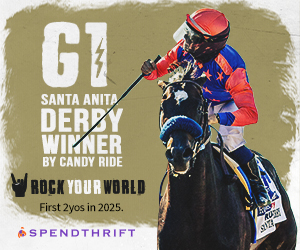
The Breeders’ Cup World Championships is a prestigious event in the world of thoroughbred horse racing, showcasing the finest equine talent from around the globe. Since its inception in 1984, the Breeders’ Cup has grown in both size and significance, becoming a cornerstone of the racing calendar. This article explores the rich history of the Breeders’ Cup, detailing its origins, evolution, and the notable moments that have defined this remarkable event.
The Inception of The Breeders’ Cup
The Breeders’ Cup was the brainchild of John R. Gaines, a prominent thoroughbred owner and breeder who sought to create a year-end championship for North American racing. Announced at the Kentucky Derby Festival awards luncheon in 1982, Gaines’ vision was to bring together the best horses from around the world for a single, high-stakes day of racing. The concept quickly gained traction, despite initial skepticism from some quarters of the racing community.
The inaugural Breeders’ Cup took place on November 10, 1984, at Hollywood Park in California. The event featured seven races with a total purse of $10 million, attracting top horses, trainers, and jockeys. It was an instant success, establishing the Breeders’ Cup as a premier event in the racing world.
Growth and Expansion in the Early Years
Throughout the late 1980s and 1990s, the Breeders’ Cup continued to grow in popularity and prestige. The event remained a single-day affair, but the number of races and the total purse increased. By the end of the 1990s, the Breeders’ Cup featured eight races with a combined purse of over $13 million.
One of the most significant developments during this period was the internationalization of the event. Top horses from Europe, Japan, and other parts of the world began to compete regularly, enhancing the global appeal of the Breeders’ Cup. The 1996 edition, held at Woodbine Racetrack in Canada, marked the first and only time the event was held outside the United States, further emphasizing its international stature.
The Move to a Two-Day Event
In 2007, the Breeders’ Cup underwent a major transformation, expanding from a single day to a two-day event. This change allowed for the addition of several new races and increased the total purse significantly. The first day was initially dedicated to races for female horses, known as “Ladies’ Day,” but this concept was later abandoned in favor of a mixed schedule on both days.
The expansion proved to be a success, attracting larger crowds and greater wagering handle. The Breeders’ Cup Challenge “Win and You’re In” series was also introduced, offering automatic berths to winners of designated races throughout the year. This series added a new layer of excitement and anticipation leading up to the championships.
Memorable Moments and Milestones
The Breeders’ Cup has produced countless memorable moments and historic achievements. One of the most notable occurred in 2009 when the mare Zenyatta became the first female to win the Breeders’ Cup Classic, capping an undefeated season and solidifying her place among the all-time greats.
In 2015, American Pharoah made history by becoming the first horse to win the “Grand Slam” of thoroughbred racing, capturing the Triple Crown and the Breeders’ Cup Classic in the same year. His dominant performance in the Classic was a fitting conclusion to a remarkable career.
The Breeders’ Cup has also been a platform for international stars. European horses like Goldikova, who won the Breeders’ Cup Mile three times, and the legendary Irish trainer Aidan O’Brien, who has numerous Breeders’ Cup victories to his name, have left an indelible mark on the event.
The Financial Backbone
The Breeders’ Cup’s success is not just about the racing; it is also underpinned by a robust financial model. Prize money is largely funded through nomination fees paid by breeders. North American stud farms contribute an annual fee based on their stallions’ stud fees, with additional costs if the stallion has over 50 foals in a year. European and South American breeders pay a percentage of the stud fee for their nominations.
These funds are crucial in supporting the significant purses offered at the event. For example, in 2018, the total prizes and awards exceeded $30 million, making the Breeders’ Cup one of the richest events in the world. This financial model ensures that the Breeders’ Cup attracts top-tier talent, providing significant incentives for breeders, owners, and trainers to participate, which in turn raises the event’s profile and competitive standard.
As we approach the Breeders’ Cup 2024, the anticipation is building, not just for the races but also for the Breeders Cup 2024 betting, which promises to add an extra layer of excitement for fans and participants alike.
The Breeders’ Cup and Media
Media coverage has played a significant role in the Breeders’ Cup’s prominence. From its inception in 1984 until 2005, NBC was the event’s primary broadcaster, bringing the excitement of the races to a wide audience. In 2006, ESPN took over, further expanding the event’s reach. The partnership with ESPN lasted until 2011 when NBC resumed coverage, including a ten-year extension in 2014. This return to NBC brought a renewed focus on comprehensive coverage, including in-depth analysis and features on the horses, jockeys, and trainers.
The Breeders’ Cup has also embraced digital platforms, with simulcasting and streaming agreements, such as the one with Betfair in 2009, which brought the event to a global audience. These media strategies have ensured that the Breeders’ Cup remains at the forefront of horse racing, engaging fans around the world and enhancing the sport’s visibility.
Recent Developments and Future Prospects
In recent years, the Breeders’ Cup has continued to evolve and adapt. The event has rotated between several iconic racetracks, including Churchill Downs, Santa Anita Park, and Keeneland, ensuring that fans across the country can experience the excitement firsthand.
In 2018, the Breeders’ Cup introduced “Future Stars Friday,” featuring races exclusively for two-year-olds, including the new Juvenile Turf Sprint. This addition reflects the Breeders’ Cup’s commitment to innovation and its role in showcasing emerging talent.
Conclusion
The Breeders’ Cup has come a long way since its inception in 1984. From a bold idea to a global racing extravaganza, it has captured the imagination of racing fans and participants alike. With a rich history filled with unforgettable moments and a bright future ahead, the Breeders’ Cup continues to be a celebration of the very best in thoroughbred racing. Whether you’re a lifelong racing enthusiast or a casual fan, the Breeders’ Cup offers a thrilling and unparalleled experience that showcases the true spirit of the sport.



